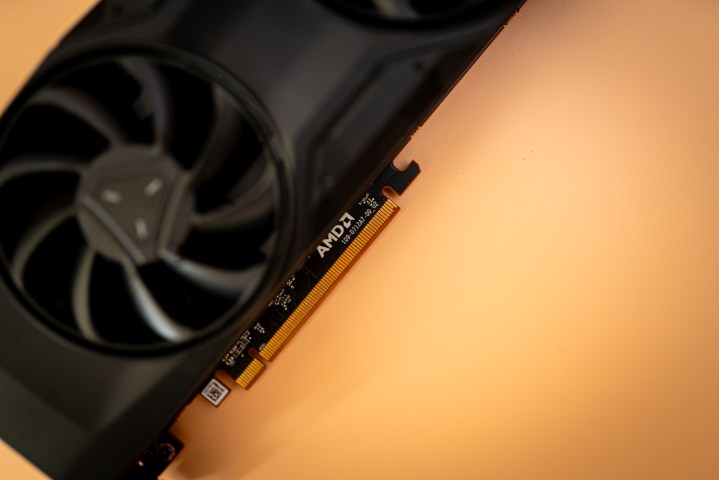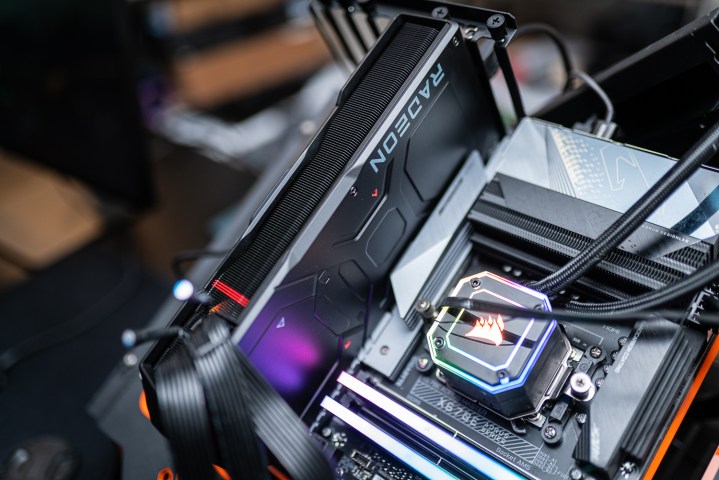
A year and a half after the launch of RDNA 3, AMD’s graphics card lineup has grown a little stagnant — as has Nvidia’s. We’re all waiting for a new generation, and according to previous leaks, AMD was getting ready to release RDNA 4 later this year. Except that now, we’re hearing that it might not happen until CES 2025, which is still six months away.
Launching the new GPUs in the first quarter of 2025 is a decision that could easily backfire, and it’s never been more important for AMD to get the timing right. In fact, if AMD really decides to wait until January 2025 to unveil RDNA 4, it’ll miss out on a huge opportunity to beat Nvidia.
There’s never been a better time
Who’s a PC hardware enthusiast’s best friend during the period between one generation of GPUs and the next? Various leakers, of course. Without them, we’d be kept in the dark for months on end.
The downside? A lot of the stuff we hear turns out to be untrue, and it’s all too easy to make something up and share it as a rumor, then see it echo throughout the internet as if it were a fact. As a result, hunting for useful information about next-gen graphics cards is a bit of a minefield.
Out of all the rumors I’ve heard about RDNA 4 and RTX 50-series graphics cards, the idea that they’d hit the shelves in late 2024 was possibly the least outlandish. After all, it made perfect sense for a number of reasons, and that’s true for both manufacturers.
First, it’d have been two years after their previous big launches, and that’s often the gap between one gen and the next. Second, the back half of the year is generally when many tech giants aim to get some new products out. It’s not just due to holiday sales but also because there are usually plenty of new games being released around the same time, prompting gamers to update their PCs.

Admittedly, there have been fewer rumors about AMD’s RDNA 4 than there have been about Nvidia’s RTX 50-series. But based on what we know, it seems safe to assume that Nvidia will open with its high-end cards near the end of the year. Mainstream GPUs, like the RTX 5070 and the RTX 5060, are only said to follow in 2025.
That’s fantastic news for AMD.
No, it’s not about launching something better than Nvidia and stealing potential sales. Despite reportedly having better brand recognition than Intel, AMD is always the underdog in its competition with Nvidia, which remains the go-to for many gamers. There are only so many customers it can ever hope to “steal.” It’s about filling a niche that Nvidia is basically leaving wide open and up for grabs.
If Nvidia launches the RTX 5090 and the RTX 5080 in late 2024, we’re looking at two GPUs that will cost $1,000 and more. (I would be overjoyed to see a sub-$1,000 RTX 5080, but I’m a realist.) Such GPUs look great in benchmarks and are exciting in AAA games, but let’s face it — most of us don’t need them, and most of us don’t want to spend that much money on a graphics card alone.
With two next-gen behemoths from AMD (although the RTX 5080 is reportedly not going to be that impressive), what can you do if you want a next-gen GPU, but don’t want to spend a small fortune? Well, this is where AMD could swoop in as the alternative. With RDNA 4 launching between September and December, AMD would provide a solution to this problem. Next-generation cards with decent performance and a less-than-outrageous price? I’m no marketing guru, but that sounds like a recipe for success. Better yet, there’d be nothing that Nvidia could do to remedy that.
The problem is that this scenario might never become a reality.
CES 2025? Really?

According to frequent GPU tipster Kepler_L2 on X (formerly Twitter), AMD may hold off with launching RDNA 4. I don’t mean a month or two. I mean holding off for so long that suddenly, it’s 2025 and the cards are still not on the shelves.
The leaker, cryptic as ever, didn’t reveal much — in fact, their predictions were only made in a reply to someone else’s tweet. When asked about whether RDNA 4 would be released in 2024, Kepler replied: “CES.” And it’s not even both of the GPUs that are said to be launched at that time. Kepler expects that the Navi 48 (the flagship) will be unveiled during CES 2025, but the Navi 44 (the lower midrange card) will only follow in the second quarter of 2025.
Oh CES is for N48. N44 is probably Q2.
— Kepler (@Kepler_L2) July 5, 2024
Obligatory disclaimer: Until proven otherwise, this is just a rumor. And, as I’ve outlined above, this is a rumor that may not make too much sense from a business standpoint. I don’t pretend to be a market analyst, but all the signs point to the fact that the end of this year would be a good time for AMD to strike against Nvidia. Come next year, Nvidia will already be on the cusp of launching the RTX 5070 and the RTX 5060. Who knows, maybe some remnants of Intel Battlemage will even make it to market by then, too.
With that out of the door, I can’t help but feel a little worried about AMD and the larger state of graphics cards right now. A delay is one thing, but when looking at the bigger picture, I’m starting to wonder just how much AMD still cares about its consumer graphics cards. We’ve already had to adjust our expectations quite a lot, but it seems another readjustment might be necessary.
Lowering expectations

To understand the context of this upcoming launch, we need to revisit the past. In 2022, before the launch of RDNA 3, I was excited about what seemed to be a solid generation of graphics cards. AMD appeared to have a real competitor to Nvidia on its hands, and the GPUs hit the market just a month after Nvidia’s RTX 4080. AMD couldn’t have timed that launch better if it tried.
The RX 7900 XTX, priced at $200 less than the RTX 4080, offered similar performance in terms of pure rasterization in games. Sure, it still wasn’t the ray tracing workhorse Nvidia was able to deliver, and the lack of Nvidia’s Deep Learning Super Sampling 3 (DLSS 3) frame generation was a bummer — but it was a solid GPU at a less outrageous price.
For the first time in a long time, I actually considered giving up on Nvidia and trying out AMD in my own PC. But, having seen the RX 7900 XTX in action, and with the price not being a lot different from that of the RTX 4080, I ended up getting the Nvidia card.
I can’t say I regret my choice of GPU. The RTX 4080 is an absolute powerhouse. With that said, I continue rooting for AMD, and I was impressed with some of its RDNA 3 graphics cards. The RX 7800 XT and the RX 7900 GRE especially stand out as examples of good value for the money, and that’s a factor that can’t be overlooked in PC hardware.
If there was one thing I’d have liked to see from AMD in RDNA 3 — other than a slightly cheaper flagship — it was a competitor to the RTX 4090. The RX 7900 XTX can rival the RTX 4080, but that’s still 30% to 40% slower than the 4090. It’d have been nice to see AMD come up with an answer to Nvidia’s most powerful GPU, but hey, there was always the next generation. I’ve been awaiting it eagerly with all the force of my reignited enthusiasm for AMD … until the leaks and rumors started, that is.

We’ve now heard from enough sources that AMD is stepping down from the high-end GPU race that it almost feels like it’s been confirmed at this point. Of course, it wasn’t, because AMD is yet to say a word about RDNA 4. But rumor has it that the top card in the lineup will outpace this generation’s RX 7900 XT in ray tracing and will keep up with it in rasterization. That’s not that much to write home about, honestly.
The whole period between RDNA 3 and RDNA 4 has gradually lowered my expectations for AMD’s gaming GPU business. Don’t get me wrong. There’s a lot of merit in focusing on mainstream cards. This is more true than ever before now, when Nvidia might not even have a sub-$1,000 GPU out until well into the first quarter of 2025.
On the other hand, that’s all the more reason why delays might backfire. Taking advantage of this short window of time when Nvidia won’t have any next-gen GPU at an affordable price could be huge, and during the holiday shopping season, no less. Now is not the time for delays.
Let’s assume that this rumor is true. Would AMD be delaying RDNA 4 because the cards weren’t ready, despite traces of them having started showing up in drivers months ago? Or is it because it’s just not that desperate to score those end-of-the-year sales anymore?
Bigger fish to fry?

AMD clawed its way out of near bankruptcy in 2015 and made a glorious return as the one and only true competitor to two giants: Intel and Nvidia. While its rivals mostly specialize in just one thing, AMD has diversified, and although it doesn’t lead either market, it’s responsible for some of the best processors and some top-notch GPUs. In recent years especially, AMD’s products have been getting great reviews, from its 3D V-Cache gaming CPUs to its more reasonably priced GPUs.
But AMD’s gaming segment appears to be bleeding money. Its gaming revenue dropped by 48% year-over-year, and even AMD itself doesn’t expect it to get better.
Jean Hu, AMD’s CFO, recently talked about how the subpar sales of its Radeon GPUs affected the gaming segment in a big way. The company predicts that the revenue in that segment will continue to decline. Where’s AMD going to make money then? It’s simple: From its data center and client segment.
There’s been a shift in focus for nearly every tech company out there in recent years. From Copilot+ PCs to ChatGPT to Apple Intelligence, everything is all about AI. For companies like AMD, that means data centers and accelerators like the AMD Instinct MI300X that power generative AI and high-performance computing (HPC). AMD will never make as much money from its consumer gaming products as it does from its enterprise portfolio — that’s a fact. The same goes for Nvidia.
AMD’s leadership obviously recognizes that. In a recent interview with German website Handelsblatt, AMD CEO Dr. Lisa Su told the publication: “We are still at the very beginning of the AI revolution. My goal is for us to lead this revolution.”
All of that put together and combined with the fact that AMD’s GPU shipments have recently decreased, and Moore’s Law Is Dead revealing that AMD may be discontinuing the production of RDNA 3 cards confirms my worst fears. Could RDNA 4 be delayed simply because AMD’s focus is now elsewhere? There are much bigger fish to fry, after all.
It’s too early to panic, of course. These are all just seemingly unconnected anecdotes, and we very well may still see RDNA 4 this year. But if we don’t, and if RDNA 5 continues the same trend of not being overly competitive, it will no longer be a stretch to assume that AMD’s gaming business is becoming an afterthought — and that’d be bad news for PC gamers.





